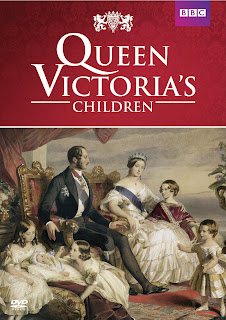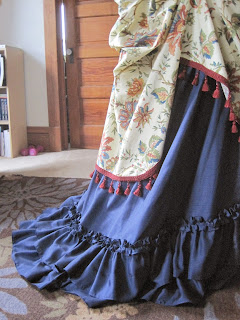For those of us who have busy schedules and a lot of books to read already (yes, me), sometimes we turn to documentary videos to do a little bit of catch-up on our knowledge. Queen Victoria's Children is a three-part series released by the BBC that chronicles Queen Victoria's relationship with her immediate family and the influence she had on them over the years.
 |
| Amazon.com |
A controlling and belittling critic of her children, Victoria at the same time drove her children away but also tried to keep them close enough to control their lives, even in adulthood. Pulling from historical events and personal papers and letters of the queen and her children, the filmmakers are able to bring to light a very detailed picture of Victoria as an occasionally doting, beastly overbearing, and appallingly narcissist mother.
From the arranged marriages she oversaw of most of her children, to the manipulative methods she used to try and keep them close, Victoria's portrayal of home-wrecker is less than ideal, but it's an aspect of her nature than helps to shed light on who she was as a queen and a mother.
Great in its use of historical fact and documents, the method of storytelling is also engaging and does not bore the viewer. Each of the episodes of well-defined in its focus point but also manages to tie into and lead to the next flawlessly. At about 3 hours, this short series is very informational and is a great view for anyone interested in Victorian history, but Queen Victoria herself.
Overall review - 5 out of 5
















































